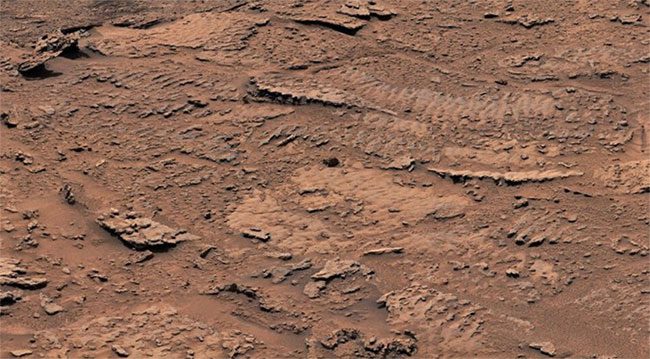The rocks on Mars exhibit wave patterns caused by waves from a shallow lake billions of years ago, recently captured by the Curiosity rover.
In an announcement on February 9, the United States space agency (NASA) reported that their Curiosity rover, currently exploring Mars, has discovered rocks with wave patterns on the surface of the Red Planet – evidence of an ancient lake.
The Curiosity rover transmitted impressive images showing the wave patterns on the surface of the rocks, created by waves from a shallow lake billions of years ago.

Rocks with wave patterns discovered by the Curiosity rover – (Photo: AFP/NASA)
Scientist Ashwin Vasavada from the Curiosity rover project at NASA’s Jet Propulsion Laboratory in California stated: “This is the clearest evidence of water and waves that we have recorded throughout the mission.”
Previously, the Curiosity rover had found evidence of lakes that once existed in various regions of Mars, identified as mineral salts left behind after these lakes dried up.
However, NASA scientists were surprised to find such clear evidence of water’s existence at Gale Crater, which the Curiosity rover is exploring, as this region might have formed when Mars was becoming increasingly dry.
Curiosity is currently exploring the low hills at the base of a 5-kilometer-tall mountain known as Mount Sharp. NASA also reported that this rover discovered debris in a valley that was swept by a landslide on Mount Sharp.
According to Vasavada, this landslide may provide the latest evidence of water recorded. It will help scientists study higher strata that are otherwise inaccessible on Mount Sharp.
Mount Sharp, with the oldest layers at the bottom and the youngest at the top, offers scientists a “timeline of Mars” to study how Mars transformed from a planet resembling Earth in ancient times, with a warmer climate and more water, into the cold desert it is today.
Another rover exploring Mars, Perseverance, landed on the Red Planet in February 2021 to search for signs of past microbial life. This multi-purpose rover will collect 30 samples of soil and rock to bring back to Earth around the 2030s for laboratory analysis.


















































